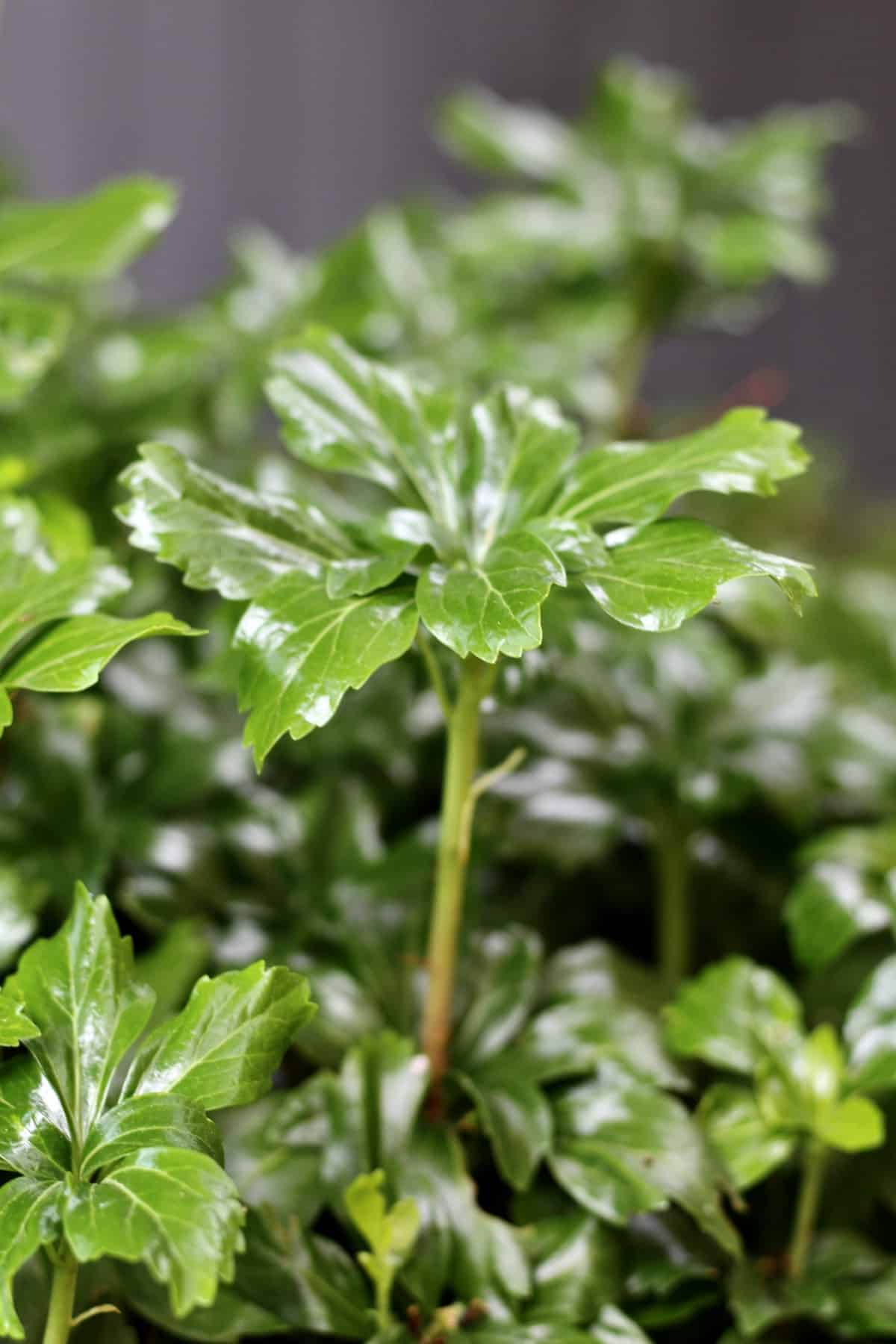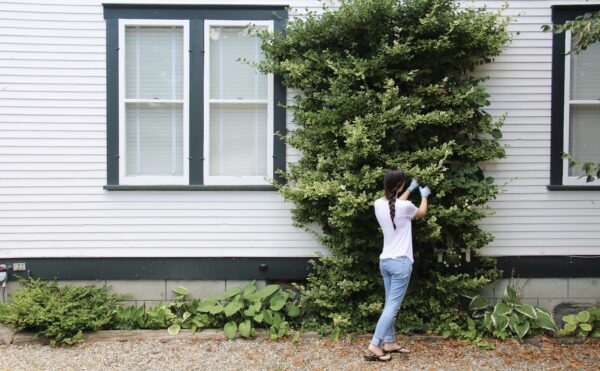Pachysandra is a shade-loving evergreen groundcover plant perfect for carpeting low-light areas with a rich, forest-green lushness. This plant is low-maintenance, drought-tolerant, and long-lived in the garden. Pachysandra most often refers to the plant Pachysandra terminalis, also known as Japanese pachysandra or Japanese spurge. Let’s look at the characteristics of Pachysandra terminalis and its use in garden design.

Pachysandra in the ornamental garden
Pachysandra is an excellent choice for an evergreen groundcover plant in a shady spot. This perennial plant lives for many years and is well-known for its lustrous green foliage. During spring, this plant produces small whitish flowers. It reaches a height of around 6-12 inches.
Where to plant pachysandra
Pachysandra is commonly planted as a groundcover in the following places:
- Around the base of a shade tree
- Over gently sloping shady ground
- In a shady woodland
- Where deer are a problem (it is deer-resistant)

Planting Pachysandra terminalis
This plant tolerates difficult conditions. It doesn’t need as much water to grow which means it can survive well during drought and can thrive in almost any type of soil. Nonetheless, let’s look at the requirements for optimal Japanese pachysandra growth.
Before you plant, keep in mind that it’s a spreading plant, and its rhizomes spread aggressively to create large colonies. When it stays in a particular area for a long time, it can be challenging to remove.
Sunlight & temperature
Pachysandra grows most quickly in light shade but can also thrive in deep shade. Avoid planting it in places where it will be exposed to full sun. Exposure to direct sun for hours can make the leaves burn, which can bring a not-so-good appearance. Another thing you should note is that extremely cold temperatures during winter can cause brown patches on the leaves.
Tolerance to soil conditions
This plant does not demand a specific type of soil to grow. It can thrive well no matter whether grown in loam, clay, chalk, or even sandy soil. If the soil has high organic matter, the better. When it comes to the soil pH, even though the pachysandra grows better in acidic soils, it can also survive in neutral and alkaline types. It does, however, require some moisture in the soil to establish its roots and spread over the ground area.

Caring for Pachysandra terminalis plants
Pachysandra thrives in what are challenging conditions for many other plants. The characteristics that make it tough are also the ones that make it low maintenance. Let’s look at some of the care and maintenance tasks to provide a suitable growth environment for your pachysandra.
Pachysandra in the garden does need to be watered now and then. While watering in general is vital for growth, avoid doing it overhead. Overhead watering can lead to fungi/blight. Leaf blight can bring an unsightly look to an otherwise beautiful-looking pachysandra patch.
Avoid exposing pachysandra to extreme sunlight levels, which can cause leaf burn. The best way to avoid high levels of sunlight is to ensure the environment is right during the planting phase. Choose a place with light to deep shade.
Don’t forget to thin out your plants from time to time. Also take care to remove fallen leaves, especially in autumn. These maintenance tasks can increase air circulation and decrease ambient moisture, which is good for overall plant health.
Pachysandra is generally a disease-free plant. It’s also almost pest-free, a quality that drives many owners to choose it for their gardens. The only pests you should be worried about are snails and slugs. If you live in an area close to wildlife, note that it’s also resistant to animals such as rabbits and deer.
A patch of pachysandra can take about three years to establish itself as a ground cover. Once it has grown, Japanese spurge doesn’t require as much maintenance. It remains evergreen, and generally only requires a bit of thinning and watering.

Benefits of Pachysandra terminalis
Pachysandra makes a wonderful living mulch in a woodland garden or other shady area. It is evergreen, year-round, and doesn’t need to be otherwise refreshed or replaced.
Pachysandra also provides wonderful weed control. Since this plant grows and spreads to form a dense ground cover, it discourages the development of weeds. This plant certainly manages to choke out competing weeds once it becomes established.
Another benefit of this plant is its ability to prevent soil erosion. It can help hold soil on the surface in the same area, decreasing the amount of soil that erodes with water runoff and gusts of wind.
Pachysandra alternatives
Here are some other groundcovers and low-growing plants which are either evergreen and/or thrive in shady conditions:
- Allegheny Spurge (Pachysandra procumbens)
- Hellebore
- Periwinkle
- English Ivy
- Boston Ivy
- Virginia Creeper
- Primrose
- Sweet Woodruff
- Brunnera
- Trillium
- Lily-of-the-Valley
- Fern
- Jacob’s Ladder
- Creeping Sedge
- Pennsylvania Sedge
- Pink Knotweed
- Soloman’s Seal
- Heart-Leaf Foamflower
- Wild Ginger
- Wild Geranium
- Violet

Companion plants for pachysandra
Here are some companion plants that thrive in similar growing conditions to pachysandra:
- Boxwood
- Hosta
- Bleeding Heart
- Astilbe
- Foxglove
- Camellia
- Hardy Kiwi
- Monkshood
- Columbine
- Hydrangea (like Incrediball)









